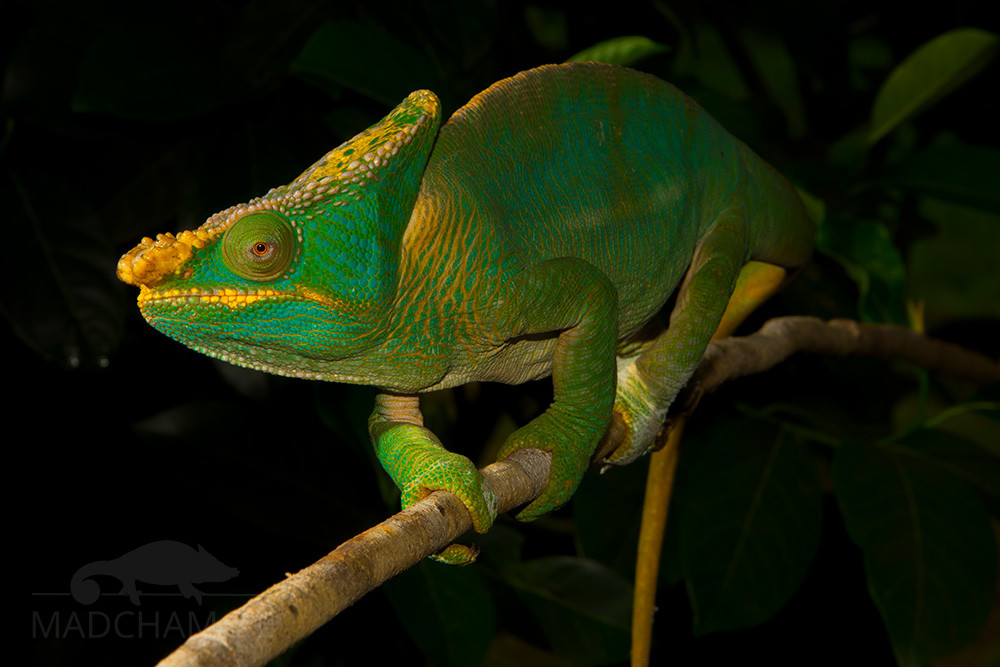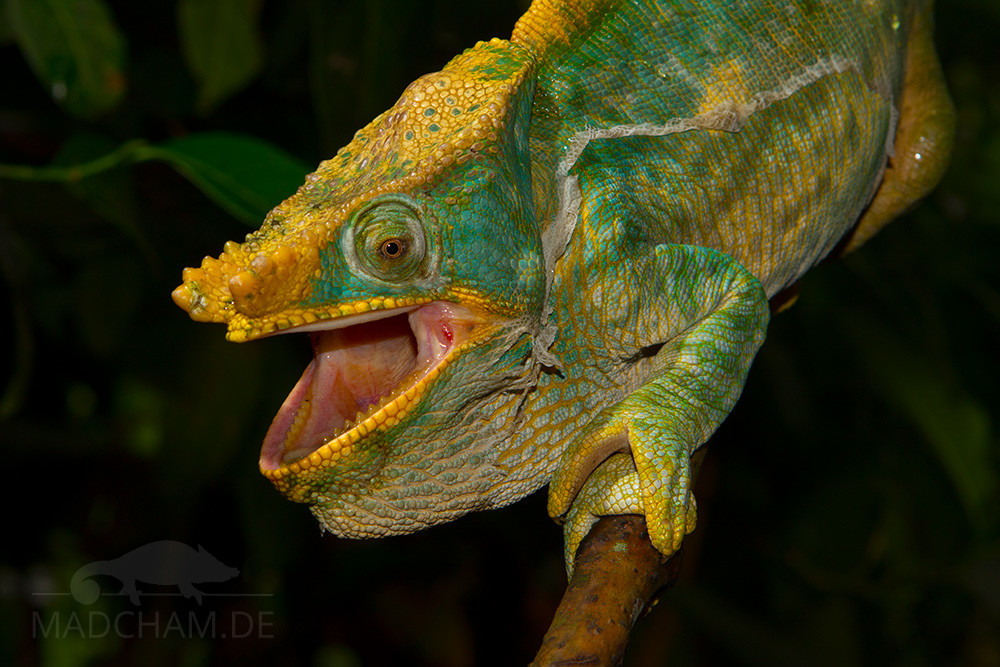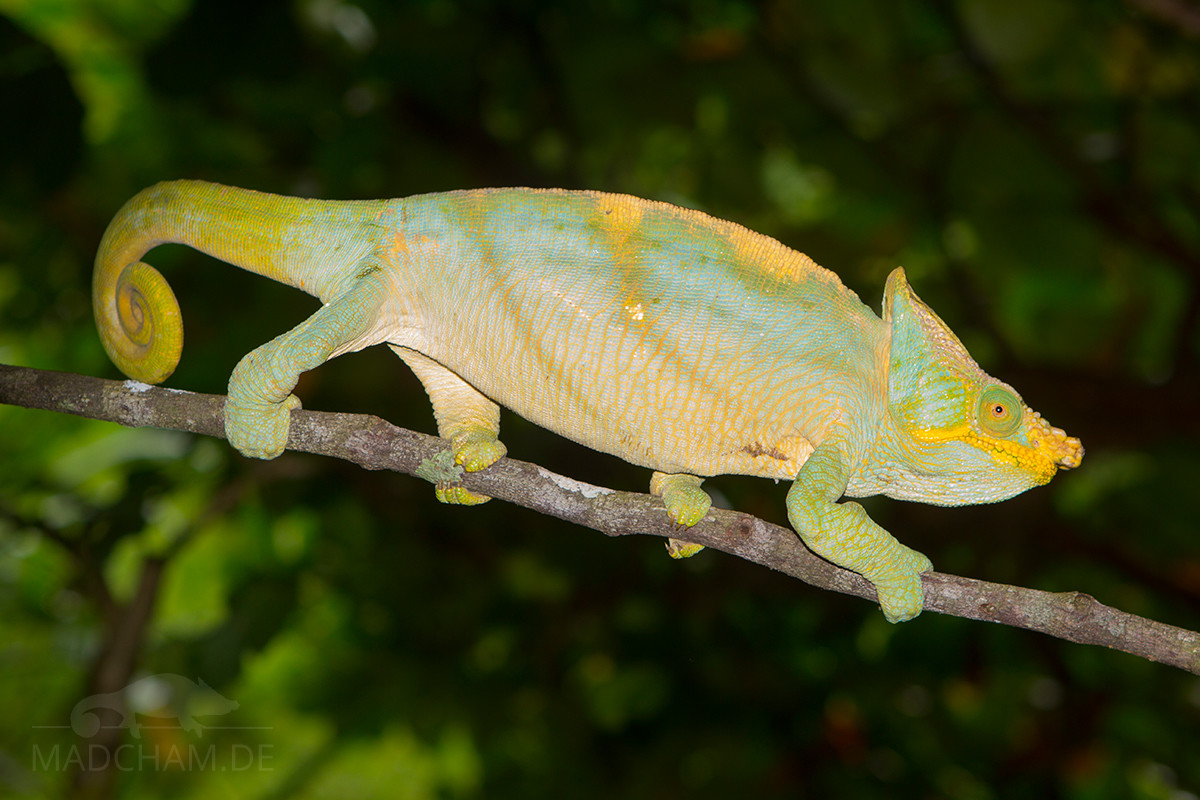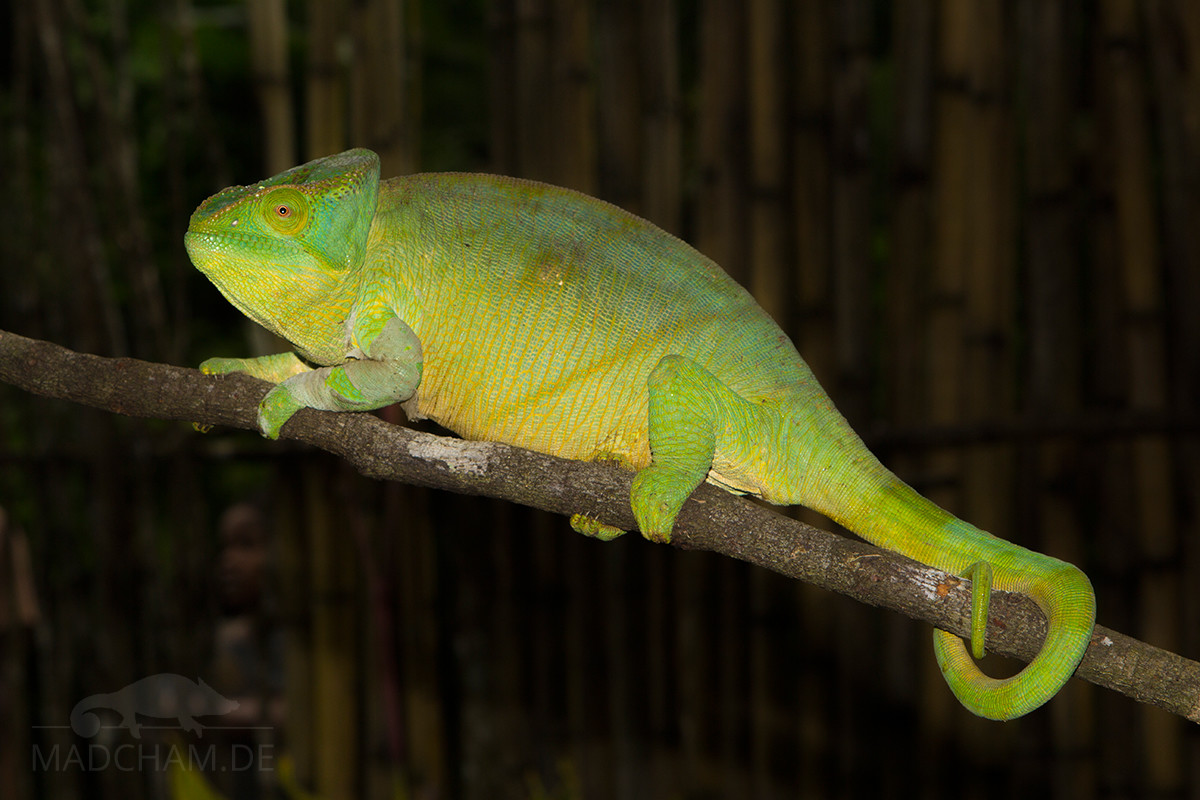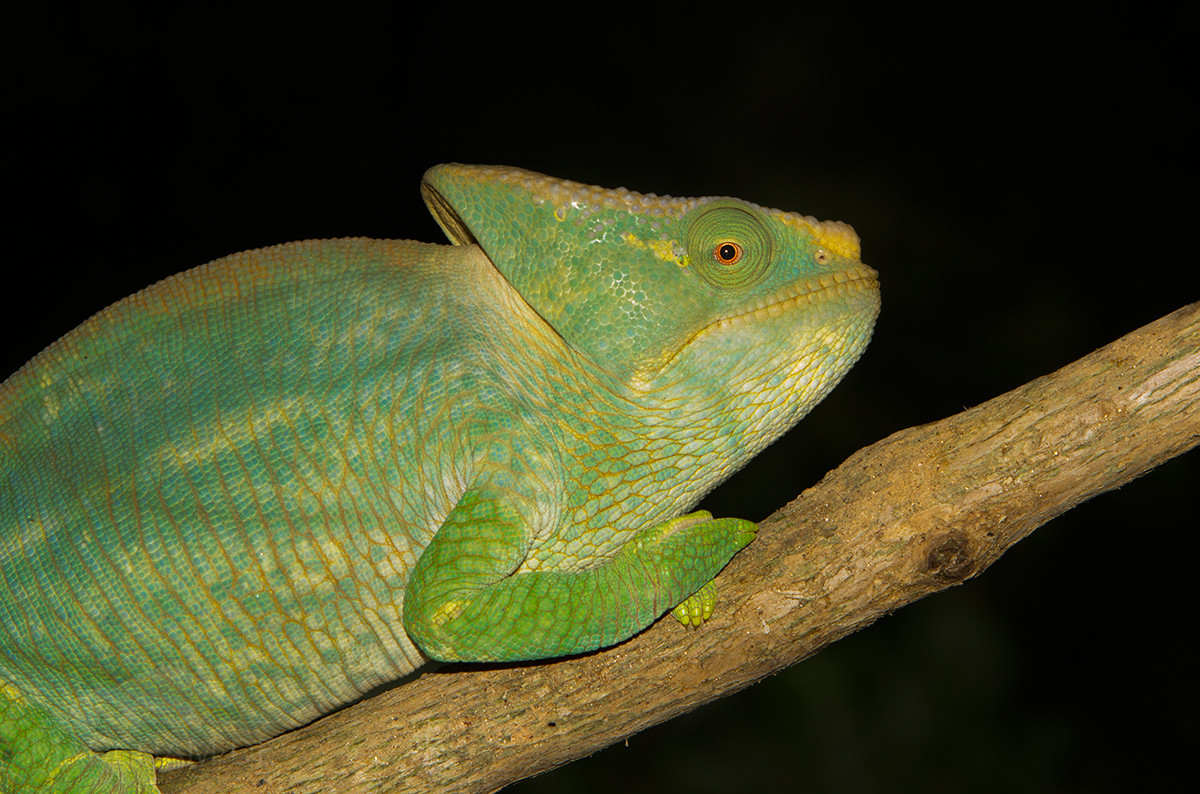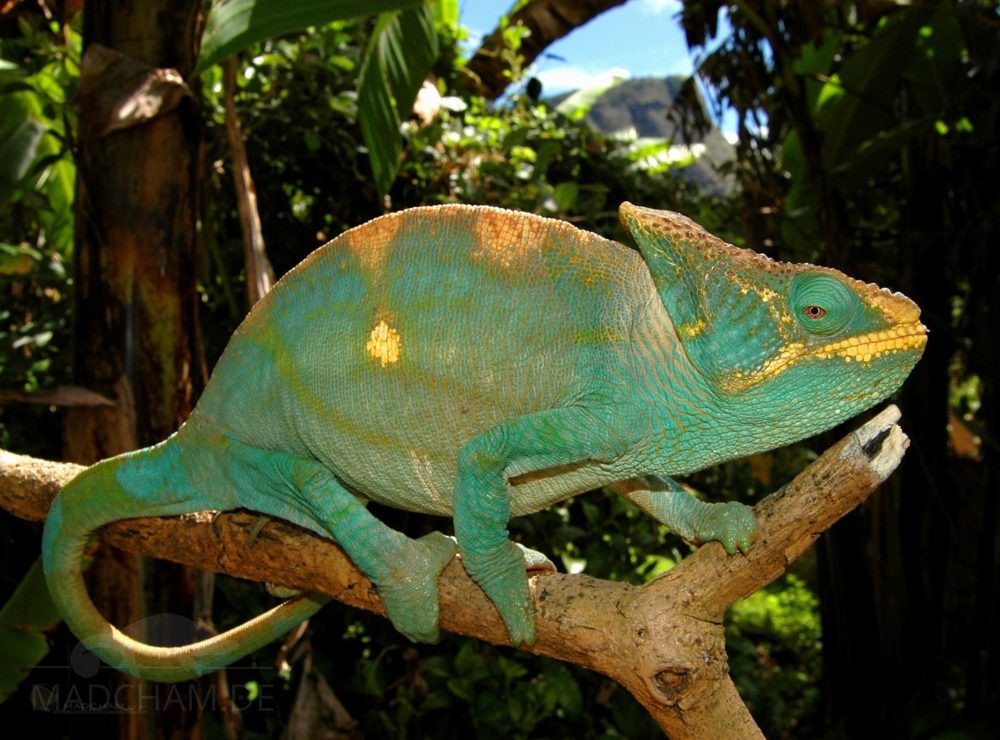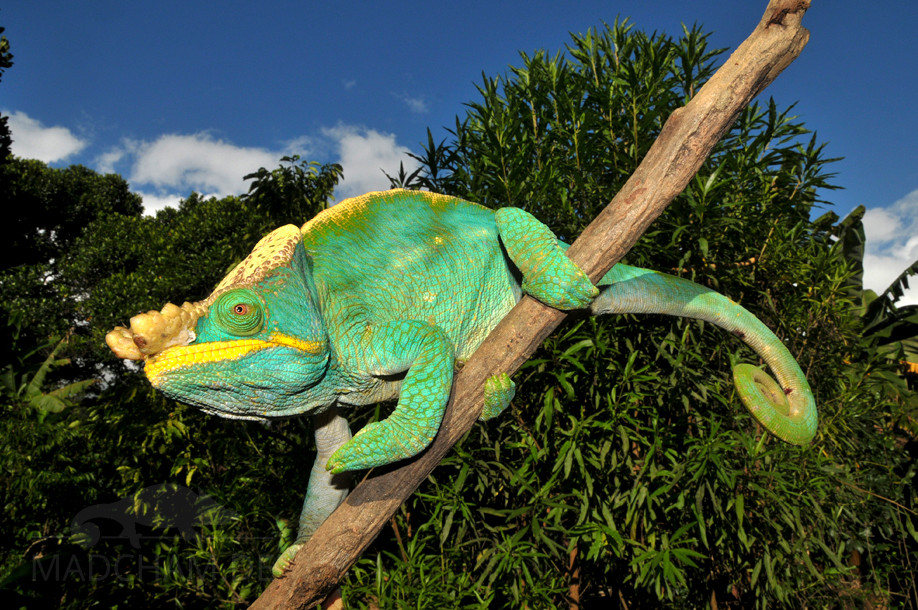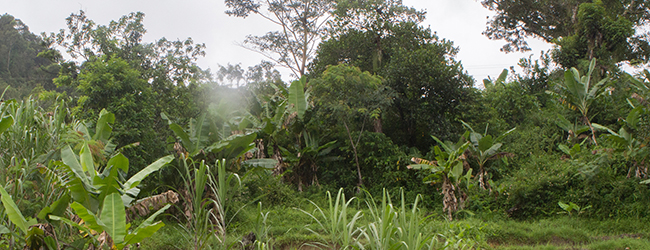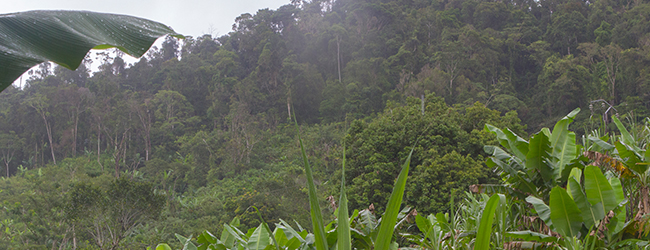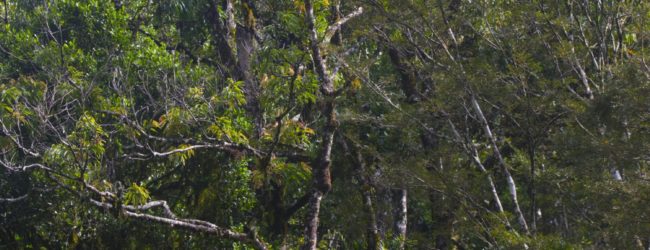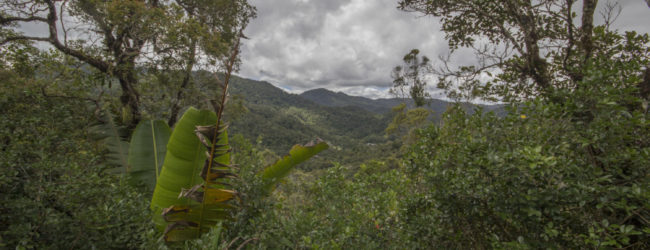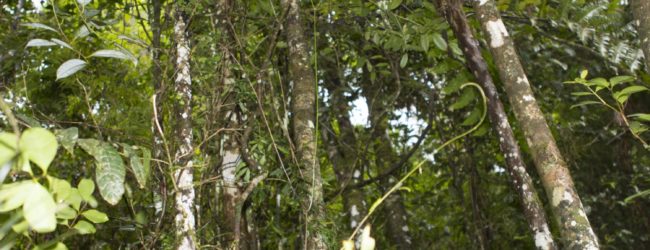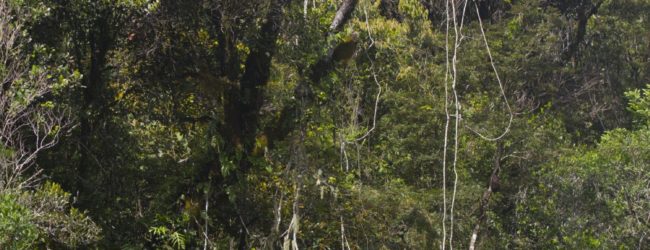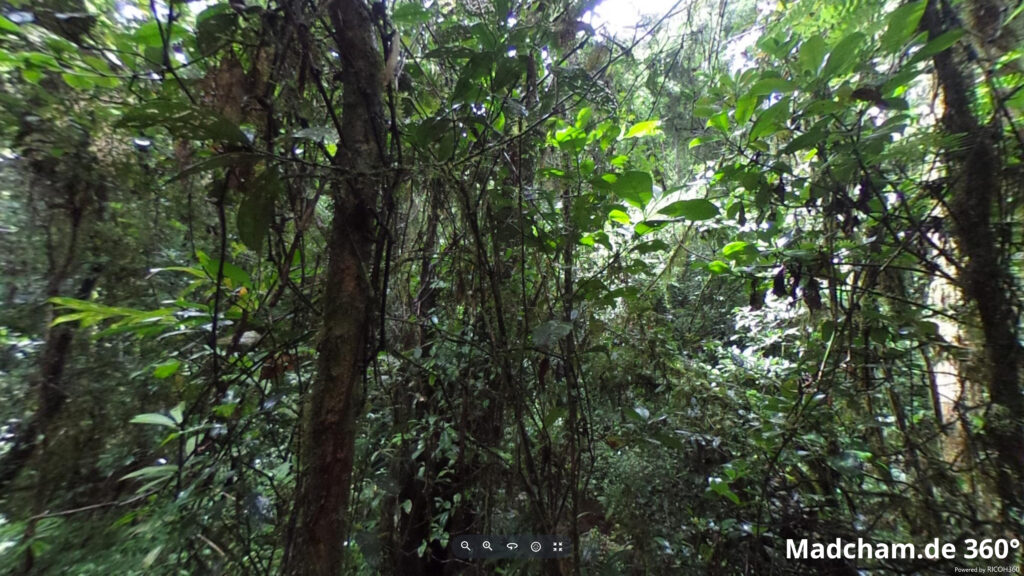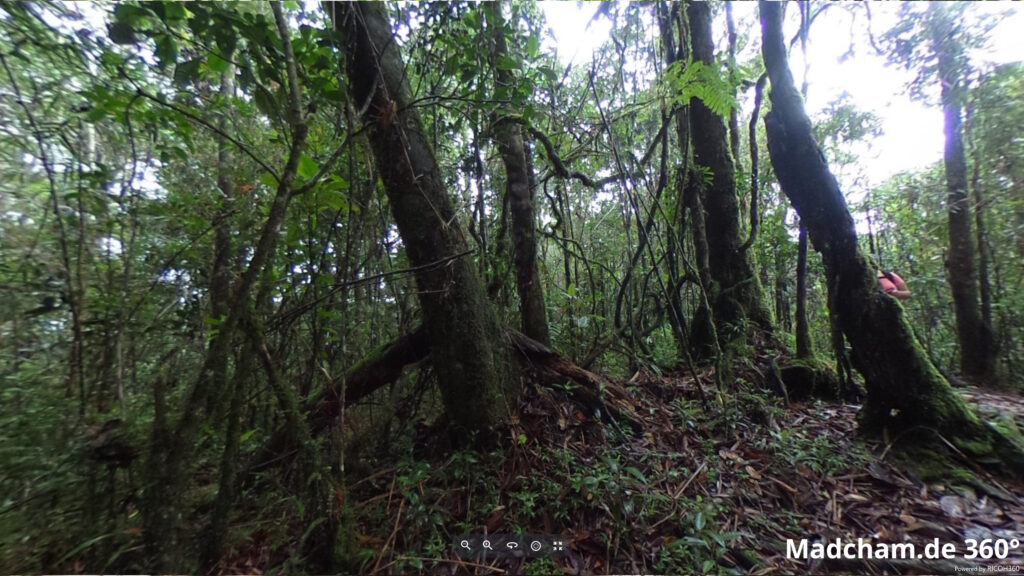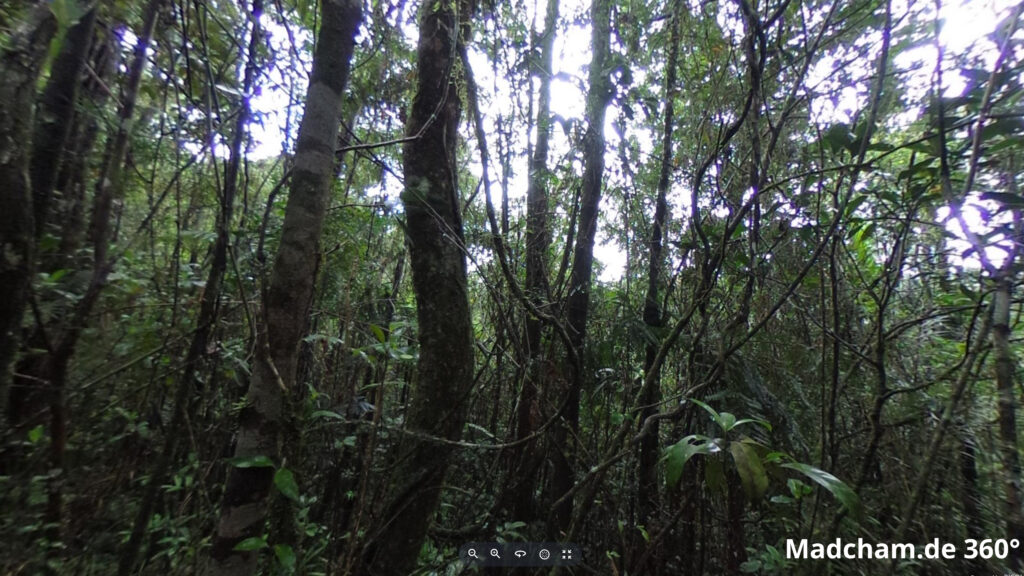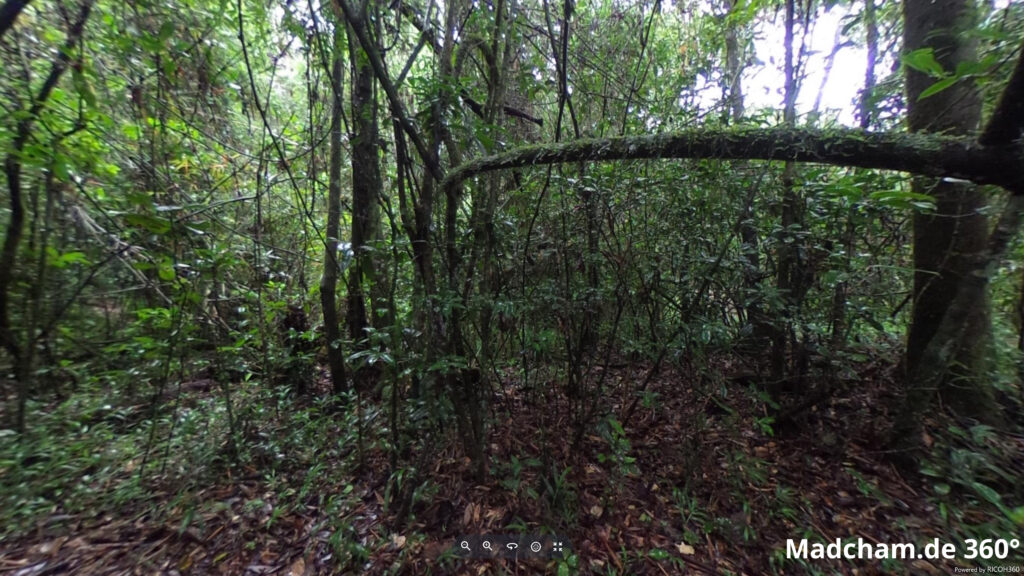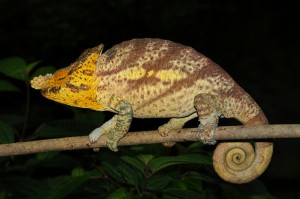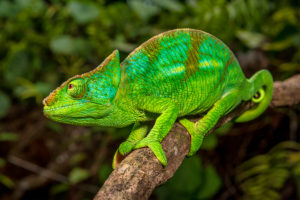Distribution:
Ranomafana national park is approximately 420 km south-east of the capital Antananarivo in Madagascar’s southern highlands. You need at least one day to get there via RN7. The village of the same name lies in a long valley, and some small villages surround the national park. The park itself consists of primary rainforest, while the surrounding areas mainly comprise banana plantations, cleared slopes, and secondary vegetation. Only a few fragments of the original rainforest remain outside the national park, and Calumma parsonii parsonii prefers exactly these areas. This color variation is difficult to find inside the national park, you have to go by car a little further in the direction of Ifanadiana – most times. The habitat is also used by Furcifer balteatus.
Appearance & size:
Calumma parsonii parsonii occurring around and in Ranomafana are called “yellow lip”. Males are blue to turquoise colored with clearly contrasted yellow lips and a yellow nose appendage. The casque can show yellow accents, too. Like in all other Parson’s color variations, the females are bright green. In Ranomafana, we have found extraordinarily big animals, with a total length of about 70 cm. Those are surely among the largest chameleons ever found in Madagascar.
Weight table
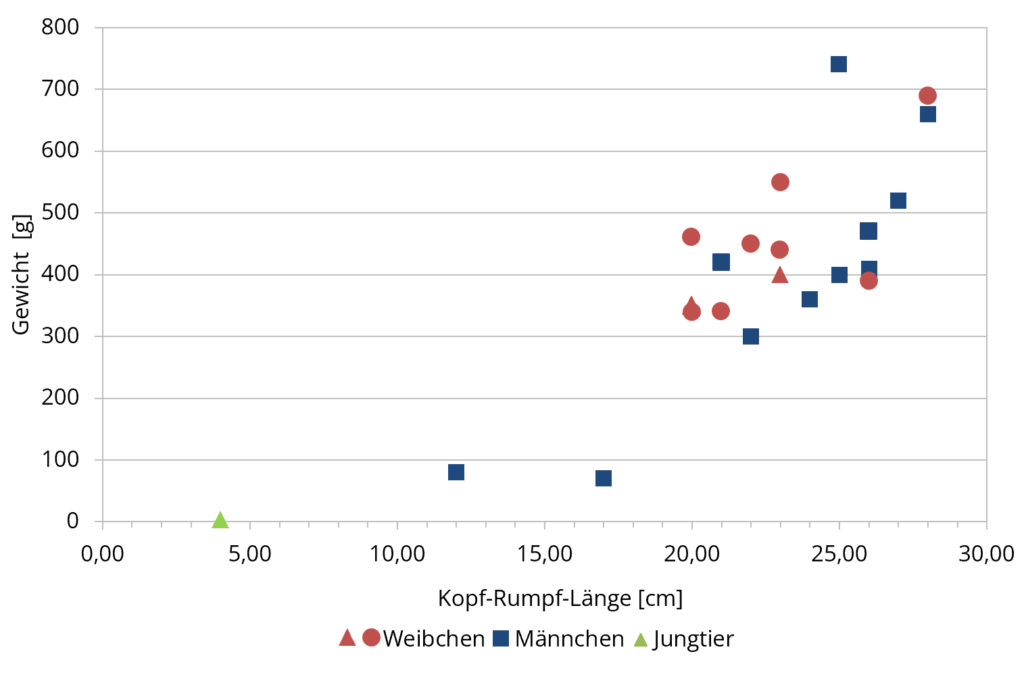
Gewicht = weight, Kopf-Rumpf-Länge = snout-vent-length, Weibchen = female, Männchen = male, Jungtier = juvenile
Since 2015, we measure weights of all chameleons found by us in Madagascar, as long as the animals (and our scales) cooperate. Until now, we have only a few weights yet, but on a long-term base, we want to get a preferably high number to get an average weight with regard to snout-vent-length (measured from the tip of the snout to the cloaca) for each species. That means our up to date tables cannot tell that much yet, but the might be a first reference. It is important to know that all weights were taken at the end of the rainy season (= best food range), so we suggest these may be maximal weights of these animals in Madagascar. Triangular symbols for females mean not gravid, round symbols mean gravid.
| Jan | Feb | Mar | Apr | May | Jun | Jul | Aug | Sep | Oct | Nov | Dec | |
| Average temperature | 23 | 24 | 23 | 23 | 21 | 19 | 19 | 19 | 20 | 21 | 22 | 23 |
| Minimum temperature | 20 | 20 | 20 | 19 | 18 | 15 | 15 | 15 | 15 | 16 | 18 | 19 |
| Maximum temperature | 27 | 27 | 27 | 27 | 25 | 23 | 23 | 23 | 24 | 25 | 26 | 27 |
| Rain days | 27 | 24 | 26 | 19 | 17 | 18 | 21 | 20 | 15 | 16 | 20 | 25 |
We have collected the data given above over several years with thermometers and hygrometers at the finding places of the chameleons. "Average temperature" means that values of a whole month have been calculated to one average value per month. For example all measured minimum temperature values of February have been calculated to one average minimum temperature for February. In plain language, this means single peak values of a day may be a little higher or lower than the average minimum and maximum temperatures. It is possible that a location has an average maximum temperature of 29°C, but one day during that month it had 33°C or even 35°C there.
The rainforest of Ranomafana is located in Madagascar's southern highlands at elevations around 1000 m above sea level. Thus climate is generally cooler than e.g. on the coast or in the southwestern part of the island. Days reach temperatures around 25°C, rainy season may become a little warmer. Sunny places may get a little above 30°C sometimes. At night, temperature drops down to 20°C in rainy season and even lower to 15°C in dry season.
But "dry" season is very relative in Ranomafana, because the forest does not get dry at all. Never. It may rain less and precipitation is not lasting for days, but it is still rich enough to let ground and trees never dry completely. Key factors of Ranomafana's climate are high humidity and cool nights.
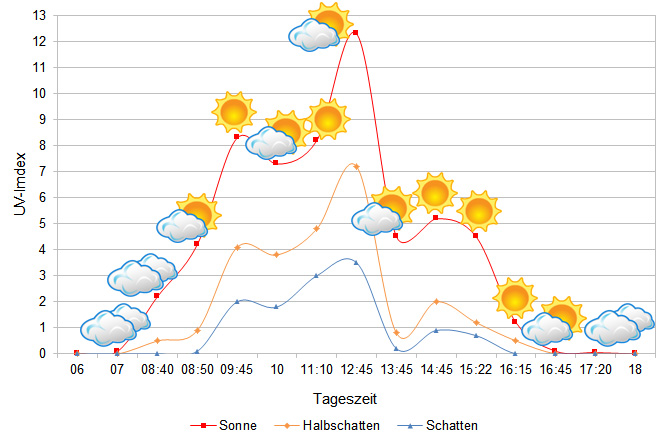
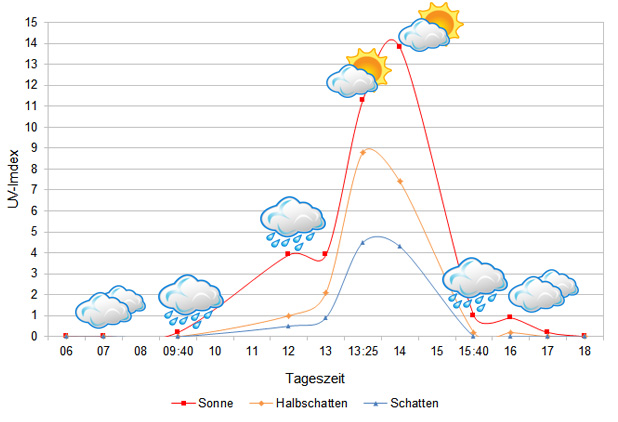
We have measured UVB data with a Solarmeter 6.5 in spring (March) at the peak of activity of chameleons in Madagascar. We always measured the values that a chameleon could maximally reach in its habitat.
Habitat:
The leftover habitat south of Ranomafana, where the animals are rather well findable, extends over a hilly area with few isolated rainforest residues. Trees are slender and high, the undergrowth is dense and the animals love to roam around high up in the trees. The soil is always humid and densely covered with foliage. Around these regions, there is sadly nothing left but secondary vegetation with mango, jackfruit and tamarind trees. The species only sometimes use those trees to climb on. In Ranomafana itself, “yellow lips” are mainly found in the intact rainforest with huge trees, lianas, and many ferns. The trees are almost always moist and mossy. The forest stretches over several canyons and is accordingly rocky, the ground is covered with thick foliage. To find the animals here in the dense rainforest is extremely difficult despite their size.
Below you will find some 360° images from the Ranomafana rainforest that we took during the rainy season. If you click on the respective image, the pictures will open in an enlarged view in a separate window. You can use the mouse to rotate in all directions. You also have the option of running the images in full-screen mode. Have fun looking at them!

